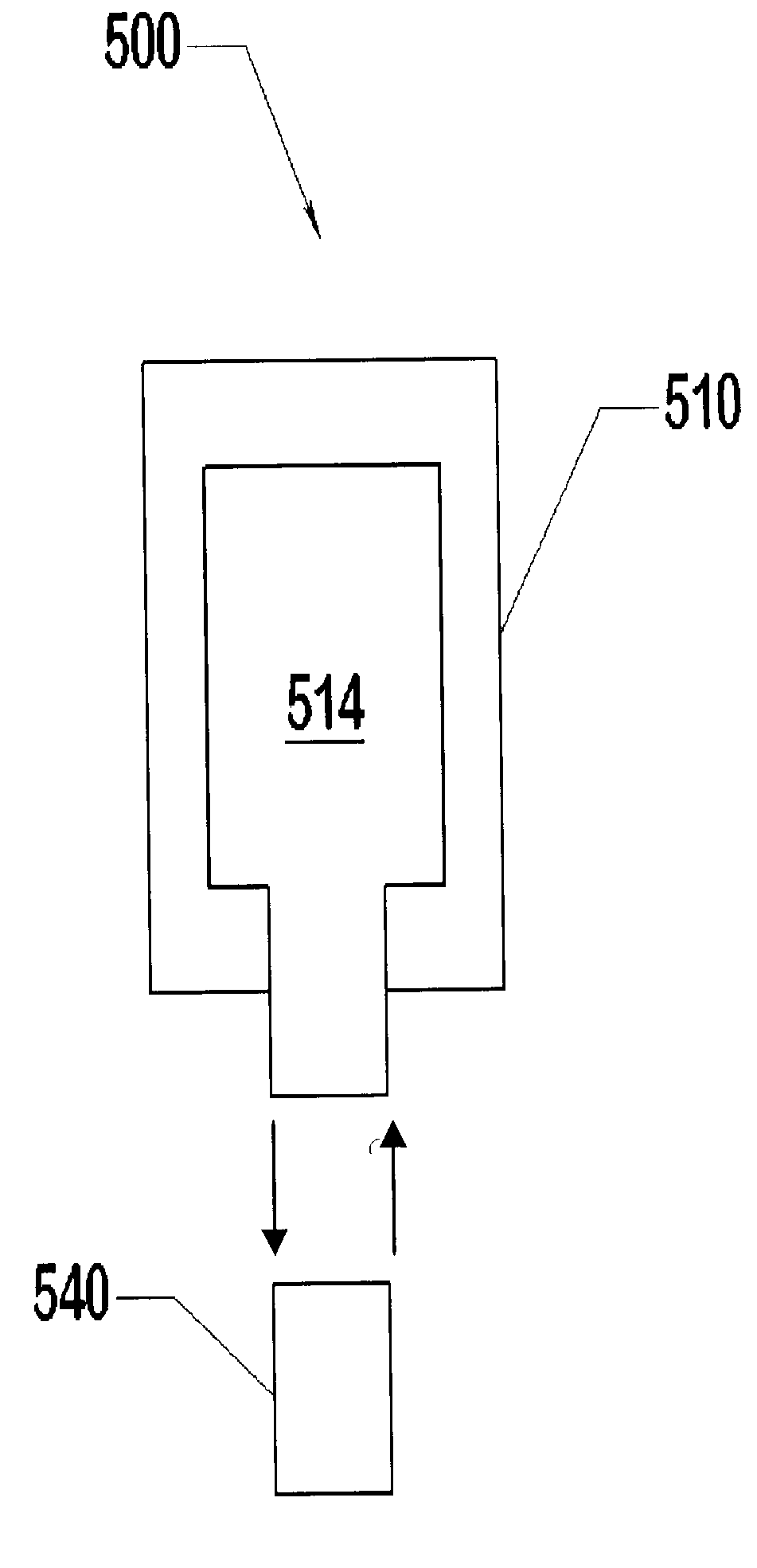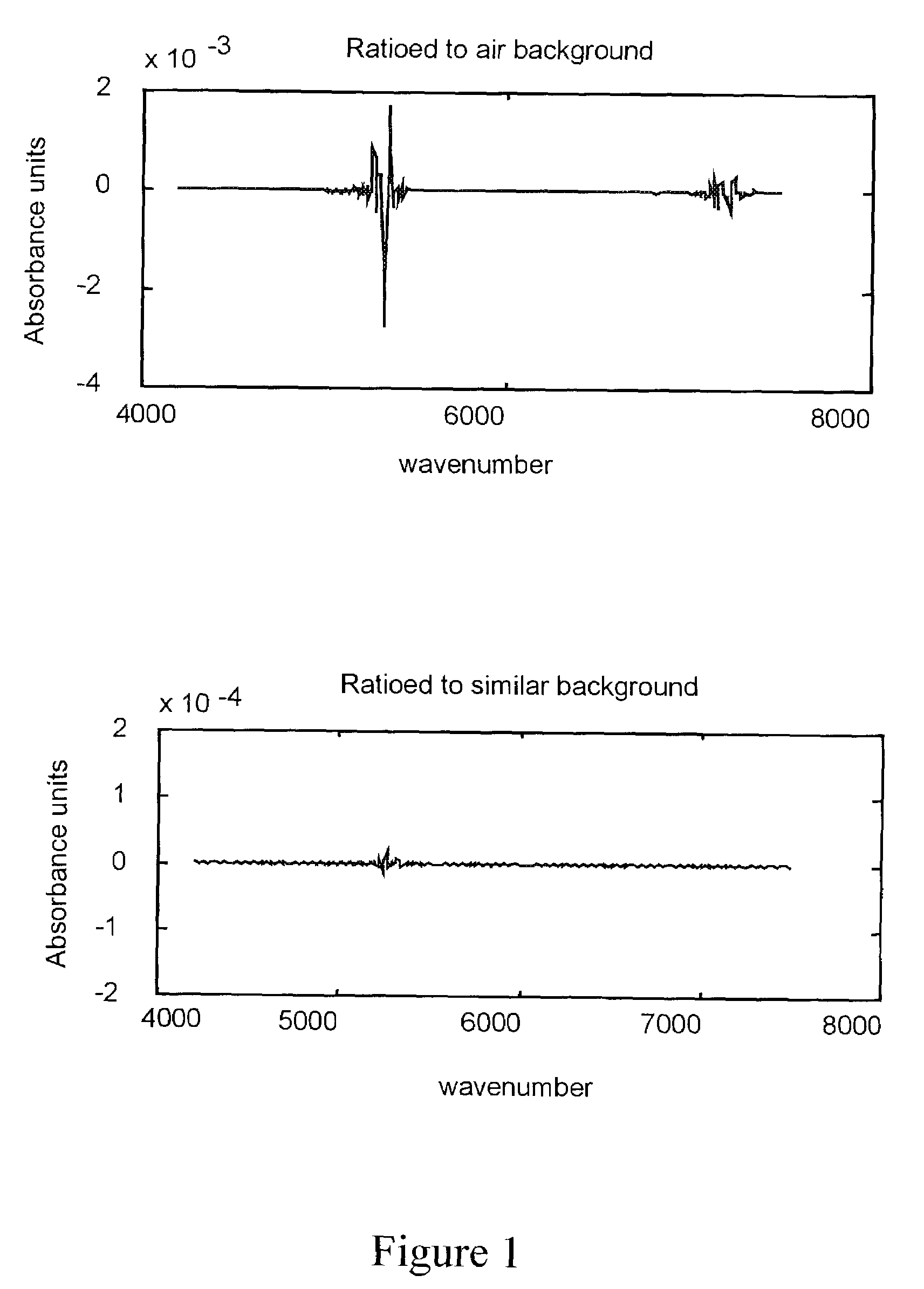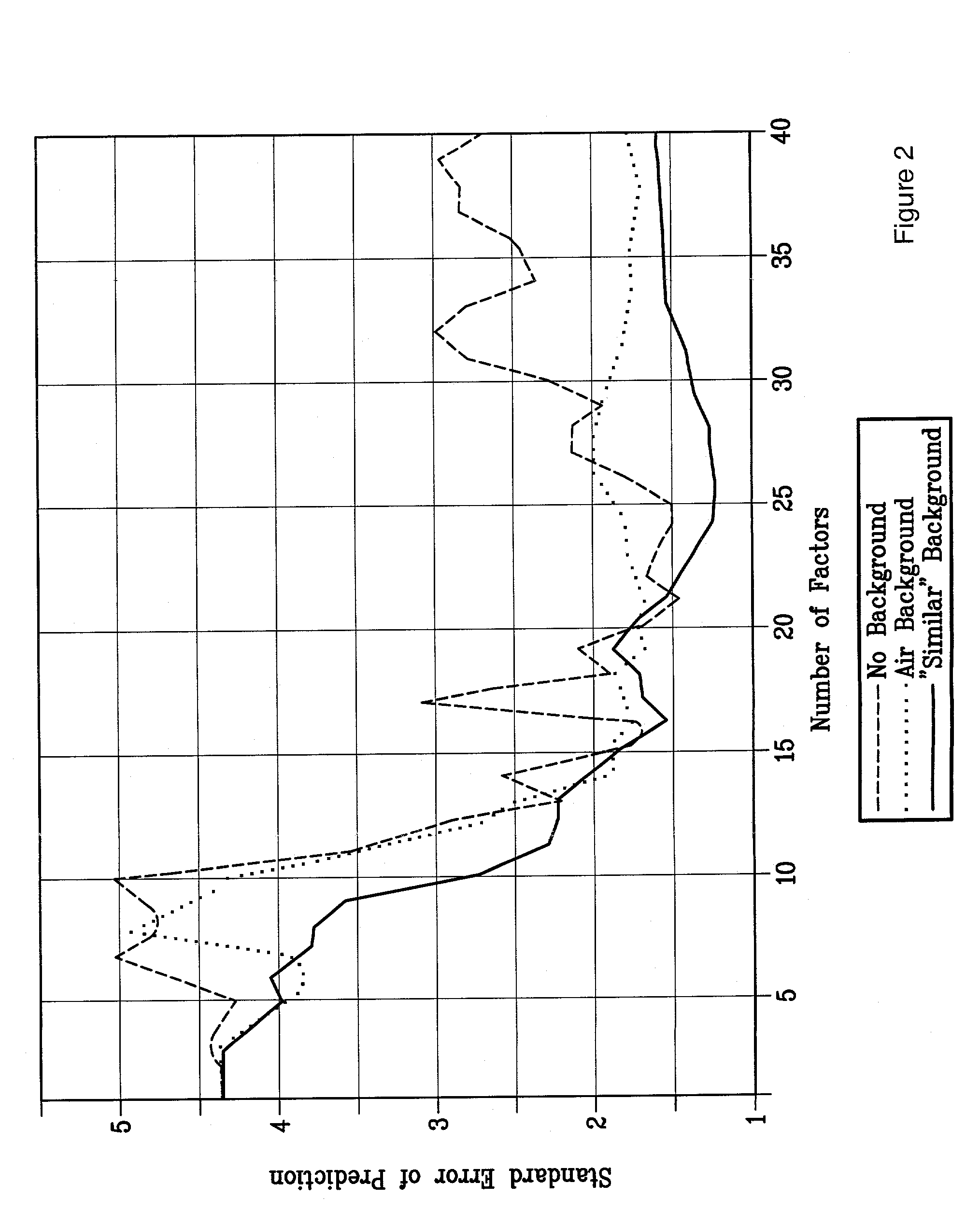Optically similar reference samples
a reference sample and optical spectroscopy technology, applied in the direction of optical radiation measurement, diagnostics using spectroscopy, instruments, etc., can solve the problems of turbid medium characteristics of biological tissue that can complicate optical spectroscopic measurements, and generally do not permit single ray of light, so as to maintain the accuracy of optical measurement systems and achieve accurate calibration models. , the effect of easy implementation
- Summary
- Abstract
- Description
- Claims
- Application Information
AI Technical Summary
Benefits of technology
Problems solved by technology
Method used
Image
Examples
example embodiments
[0098]Detailed descriptions of several specific embodiments of the present invention are provided below with reference to FIGS. 5–10. These specific OSRSes are useful, for example, in applications in which tissue properties such as analyte concentrations are to be measured in vivo using reflection spectroscopy. Specifically, these OSRSes match the optical properties of tissue at selected wavelengths in the near-infrared region including 4,000 cm−1 to 8,000 cm−1. In this optical region, water is the dominant absorbing component contained in the tissue. Each of the example OSRS embodiments provides multiple optical pathlengths through water in order to mimic the scattering of living tissue. A distribution of pathlengths can be calculated based upon Monte Carlo simulations of light propagation through scattering media having scattering properties that match those of tissue. The results can be defined by a mean pathlength with a standard deviation and skew to the distribution. The distr...
example osrs
[0122]FIGS. 10A to 10B show an embodiment of an OSRS according to the present invention, comprising a reference gel container 1000. FIG. 10B is a cross sectional end elevation view of the reference gel container 1000 shown in FIG. 10A. A main body portion 1010 defines an inner reference gel cavity 1012 where a reference gel 1014 may be disposed. The main body 1010 can include a plurality of fastening holes 1018 for fastening a top plate 1030 and / or a light guide holder 1024 to the main body 1010. The main body 1010 can also include a gasket groove 1011 disposed on a top surface 1015 of the main body 1010. The gasket groove 1011 can surround the inner reference gel cavity 1012. The inner reference gel cavity 1012 can extend substantially through the main body 1010. A light guide holder 1024 defines a light guide cavity 1013 that extends through the light guide holder 1024. The light guide cavity 1013 can be continuous with the inner reference gel cavity 1012. A light guide (not shown...
example
[0139]25 ml samples of polyacrylamide gel prepared in a vial for further optical and mechanical testing. Unless otherwise noted, the reagent stock solutions are in phosphate buffered saline (PBS), which was prepared from Sigma electrophoresis reagent at the standard 10× dilution, using constituents such as the following:[0140]2% (weight / volume) N,N′-methylenebisacrylamide[0141]25% (weight / volume) acrylamide[0142]0.05% (weight / volume) ammonium persulfate[0143]0.05% (volume / volume) TEMED
Scattering bead and analyte solution with appropriate level for the desired optical properties in the final gel (typically prepared for a 2.5 dilution to final gel volume).
[0144]Ammonium persulfate solutions should be made fresh each day; stock solutions of the other reagents can be stored in a fridge for up to a week. Unless otherwise noted, the reagents should be prepared and reacted at 25 C.
[0145]Preparation[0146]Gently degas the solutions under vacuum for 10 minutes.[0147]Form the gel precursor by ...
PUM
| Property | Measurement | Unit |
|---|---|---|
| diameter | aaaaa | aaaaa |
| concentration | aaaaa | aaaaa |
| diameter | aaaaa | aaaaa |
Abstract
Description
Claims
Application Information
 Login to View More
Login to View More - R&D
- Intellectual Property
- Life Sciences
- Materials
- Tech Scout
- Unparalleled Data Quality
- Higher Quality Content
- 60% Fewer Hallucinations
Browse by: Latest US Patents, China's latest patents, Technical Efficacy Thesaurus, Application Domain, Technology Topic, Popular Technical Reports.
© 2025 PatSnap. All rights reserved.Legal|Privacy policy|Modern Slavery Act Transparency Statement|Sitemap|About US| Contact US: help@patsnap.com



